Plastic-Recycling – PLA – CO2-emissions 21-12-202 - Arhive
Plastic-Recycling – PLA – CO2-emissions
Crude Oil Prices Trend
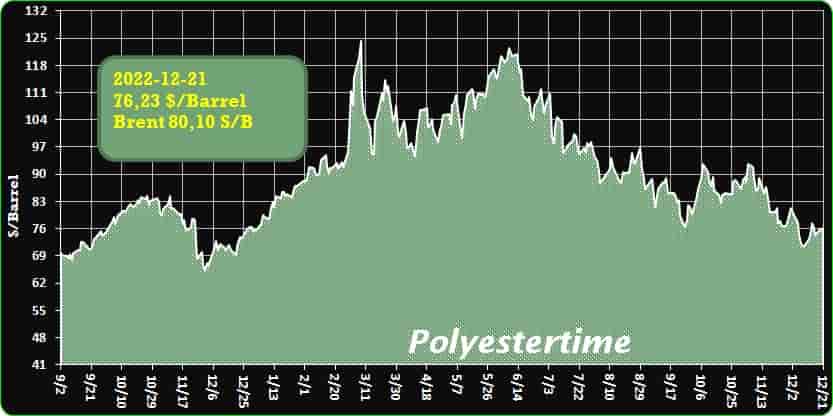
Crude Oil Prices Trend Polyestertime
-Anellotech can close the fibre loop, too
Having already demonstrated that its Plas-TCat technology for the continuous processing of solid, post-consumer plastic waste into light olefins and aromatics works, Anellotech is now planning to start testing a similar solution for textile waste.
Called Tex-TCat, the company says the technology, which makes use of fluid bed catalytic pyrolysis, delivers a direct pathway from mixed textile waste to secondary materials – BTX – rather than producing intermediates like pyrolysis oil.
Why the focus on textiles?
According to Anellotech, the fashion industry produces 100 billion garments each year. And each year, some 92 million tonnes of waste end up in landfills, mainly because of the lack of commercially viable recycling technologies for low-quality and mixed textiles as well as textile blends (existing technologies can recycle 100% cotton or polyester garments).
The Tex-TCat technology recycles synthetic and natural fibres into chemicals – benzene, toluene and xylenes – used today to make virgin synthetics like polyester and nylon — providing a closed-loop, fibre-to-fibre solution to the textile industry’s recycling problems.
“Tex-TCat has the potential to divert large quantities of previously unrecyclable textiles from landfills and provide major brands, through their existing suppliers, with recycled content,” said David Sudolsky, President and CEO of Anellotech.
Advanced lab testing and scale-up for the technology will commence in the short term. The development programmes’ next steps include optimising the feedstock preparation for efficient reactor feeding as well as additional lab studies that will lead to long-term trials in Anellotech’s fully automated 0.5-tonne-per-day process demonstration plant. The ultimate goal is a full-scale plant able to process some 200,000 tonnes per year, followed by subsequent plants that may be as large as one million tonnes, depending on feedstock availability.
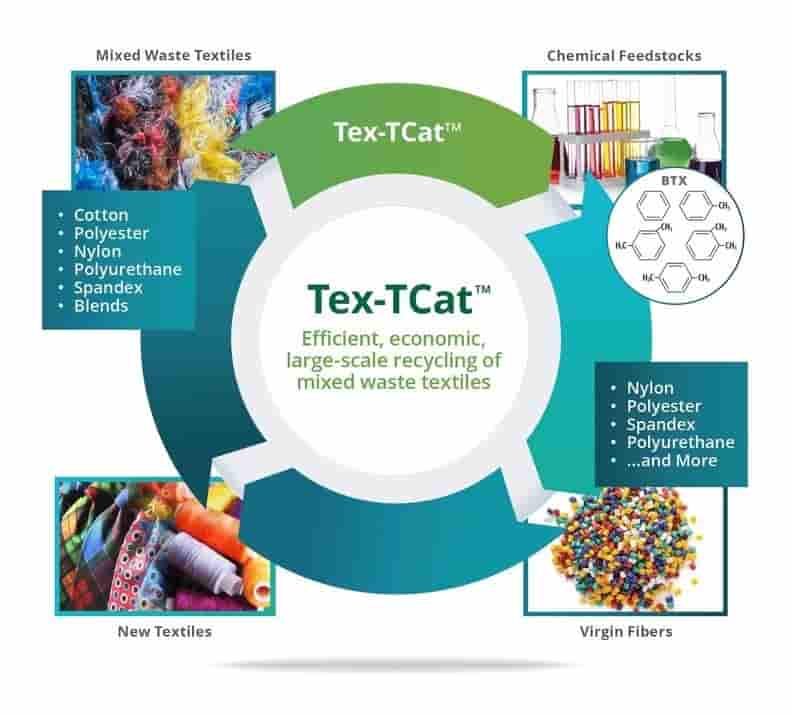
-Major UK chemical hub to open
ReNew ELP and Px Group are hiring 33 recycling experts to operate the high-tech plastics recycling plant under construction on Teesside, UK. The site is claimed to be one of the world’s biggest commercial-scale chemical recycling facilities and is scheduled to open in early 2023.
Once fully operational, the new site will be able to handle 80 000 tonnes of scrap per year using methods pioneered by Mura Technology, which owns ReNew ELP.
Its proprietary HydroPRS process uses supercritical water to break down post-consumer plastics into a range of valuable liquid hydrocarbon products including naphtha, gas oils, and heavy wax residue, all of which are building blocks in the manufacture of new plastics.
‘There is no limit to the number of times plastic can be recycled using this process,’ says Richard Daley, managing director at ReNew ELP. ‘Additionally, it is capable of processing all plastic waste types, including difficult-to-recycle materials such as composite films.’
Px Group was awarded a 10-year contract to operate the recycling plant. Initially, it will treat 20 000 tonnes of material per year before scaling up with three additional lines.
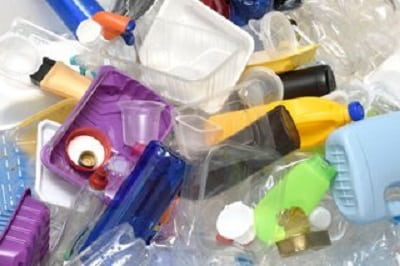
-Is Plastic Recycling Toxic?
As fossil fuel firms struggle to deal with the backlash against the industry, which is only gaining in intensity, many are betting on plastic production as the only means of future-proofing their companies. If these plans go ahead in their current form, production is expected to increase by 400%, hitting 1.8bn tonnes in annual product by the middle of the century. The backlash against this strategy, in turn, is forcing investment into recycled and recyclable plastics. But the million-dollar question, of course, is: just how clean is plastic recycling? Sometimes, the cure is worse than the illness.
New research on the hazardous waste produced by plastic recycling took a look at the methods that have been ear-marked for generalised usage. Its findings aren’t all too favourable for the emerging industry. Plastic-Recycling – PLA – CO2-emissions
Most readers will know that commercial plastics are full to the brim with various chemicals that are toxic to humans but add value to whatever the product might be, enabling its flexibility, durability or coveted non-stick characteristics. There’s been a lot of press about the ways in which consumers can be exposed to these chemicals, mostly by leakage. Understandably, then, when these plastics are dismantled as part of a recycling process, workers will necessarily be exposed to the toxins released.
The report stresses that there are different levels or types of danger, depending on the particular method for waste management. Take chemical recycling, a range of different processes (pyrolysis, hydrocracking, and gasification) that use chemistry to alter the polymeric structure of waste to render it re-usable. One of the by-products of these processes is a sort of paste with a high concentration of toxins, which is either dumped or re-used for landscaping and construction. In either case, the environment is slowly but surely polluted.
There’s a similar story with mechanical recycling, which compounds these additives that are toxic to humans into the recycled products in a process akin to bioaccumulation. In a plant designed for mechanical recycling, waste plastic undergoes shredding before it is liquified to be re-cast as a new commodity – not the most cost-effective process, it should be said.
A long way to go, then, before plastic recycling can become commonplace, but just as long of a way to go before plastic recycling is no longer needed. A rock and a hard place. Perhaps, regulators will have to explore methods for scaling down the production of plastics by disincentivising investment in the sector – guaranteed to be an unpopular move, of course.
Nevertheless, the fact is that whether it’s recycled or simply manufactured, plastics remain toxic sources of environmental pollution. The cure may not be any worse than the illness, but it’s just as painful. Plastic-Recycling – PLA – CO2-emissions
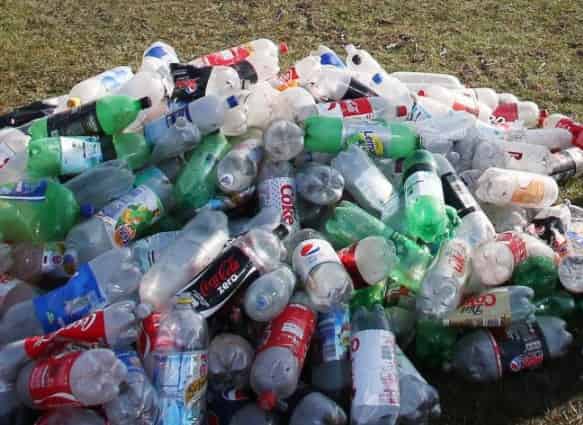
-Petcore 30th Anniversary Conference, 1-2 Feb 2023, Brussels
Petcore’s Annual Conference 2023 will be dedicated to recycling, circularity and the PET industry’s contribution to the EU’s carbon neutrality goals. 2023 marks Petcore’s 30th anniversary and the high-level conference in Brussels will explore the theme of: PET value chain in a fast-paced environment for Circularity. The hybrid event will be held over two days on 1-2 February 2023 at the DoubleTree Hilton Brussels. It will gather industry experts, policymakers and wider stakeholders in exploring the main scientific, business and regulatory issues and opportunities facing the sector. With an interactive format to encourage debate, a series of Expert panel sessions will be interspersed with debates and audience Q&A where participants will have the chance to pose questions and share their views. Plastic-Recycling – PLA – CO2-emissions
Day One will feature technical updates from the Petcore working groups with Focus sessions on: Lifecycle analysis; Bottles recyclability and circularity; and Thermoforms. The day will end with a cocktail and gala dinner. Day Two kicks off with the theme of: PET value chain in a fast-moving environment. It features an opening session on How to navigate in a world of multiple storms, after which sector operators will speak on the fundamental objectives for the PET industries, and an academic will explore the subject of Energy and Geopolitics.
The conference is honoured to welcome several speakers from the EU institutions including an update on the Commission’s Green Deal and a representative of DG CLIMA, who will speak on Net zero Carbon Strategy. Regulatory experts will reflect on the EU Big Bank and discussions will also consider the PET market evolution and perspectives for vPET and rPET. You can check out the full agenda and speakers.
For further information on registration or how to book accommodation visit the event website or contact: maria.trofimova@petcore-europe.org
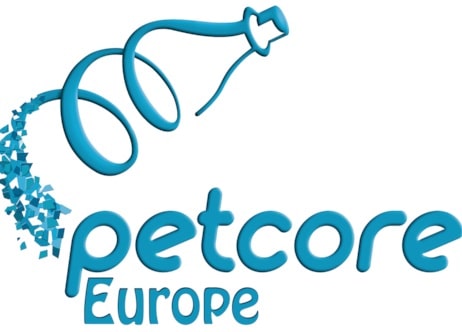
-Can forestry CO2 emissions become climate-friendly plastics?
A Finnish project aims to find out
Decarbonisation is fast becoming the main goal in the fight against climate change. Finnish technical research and innovation centre VTT is currently coordinating a project that is exploring the capture of carbon dioxide from the forest industry and waste incineration for utilisation in the manufacture of plastics.
At the same time, the commercial utilisation of carbon dioxide emissions is also being studied in other industrial sectors. Plastic-Recycling – PLA – CO2-emissions
The capture and utilisation of industrial CO2 emissions have long been a topic of study at VTT. That research has now become part of the present project, which was launched in August 2022 is whimsically known as the Forest CUMP project.
The project is seeking to develop technology to produce polyolefins – polyethene and polypropene – from CO2 emissions, which would replace the fossil-based raw materials currently almost exclusively used.
The Forest CUMP project is a continuation of the work done within the scope of an earlier project known as Beccu. That project investigated the utilisation of carbon dioxide in the production of raw materials for polyurethane products such as insulation materials and industrial adhesives. That project developed technologies and a process concept for an entire value chain – from the bioenergy production, the capture of carbon dioxide, through to the production of chemicals and polymers. The Forest CUMP project is building on the production technology for developed within the Beccu project.
The aim is to create a processing concept that would allow expanding the the technology to industrial production scale. An interim goal will be the construction of a small test plant in a selected industrial environment in 2024.
Learnings from the test plant will inform the development and design of the future industrial-scale plant, according to VTT Research Professor Juha Lehtonen.
“In addition to technological development, we are studying the applicability of different sources of CO2 and methods for capture and purification of CO2. We are also looking into the logistical angle linked with the transport and storage of the feedstocks – carbon dioxide and hydrogen – and the intermediate products – hydrocarbons”, he explained.
Corporate partners are also participating in the project.
The project is being funded by Business Finland and is part of the “Veturi” ecosystems initiative, which aims to promote sustainability by increasing research, development and innovation investment (RDI) in Finland. The Veturi approach – Veturi is the Finnish word for Locomotive – involves supporting leading companies to develop new business and build RDI ecosystems in Finland.
Borealis is one of the Veturi companies. Forest CUMP is part of Borealis’ SPIRIT programme, which is pushing for green transition in the plastics industry.
“This is a significant development project that supports our vision, in which the carbon dioxide emissions from industry could be utilised for the production of e.g. durable plastic pipes out of them, which can bind carbon for long periods of time”, said Antti Ilves, of Borealis.
The Forest CUMP project runs through the end of 2024. Industrial participants include Borealis, Neste and ABB, and Metsä Spring, Kemira, Vantaa Energy, Stora Enso, Kleener Power Solutions, Carbon ReUse Finland, Fortum and Essity. LUT University is a research partner, alongside VTT. Plastic-Recycling – PLA – CO2-emissions

-Futerro to build PLA biorefinery in Normandy
Belgian bioplastics manufacturer Futerro has announced plans to establish Europe’s first vertically integrated biorefinery in Normandy, France for the production and recycling of polylactic acid, or PLA.
The company already operates a PLA plant in China, which went into operation in October 2020.
That first plant has a capacity of 30,000 tons/year and is supplied by a lactic acid unit with an annual capacity of 80,000 tons. The other 50,000 tons are supplied to a sister company producing food ingredients based on lactic acid for the Asian market
Futerro, a subsidiary of the Belgian Galactic Group, has selected the industrial and port area of Port-Jérôme, in the Caux Seine agglomeration (commune of Saint-Jean-de-Folleville), located on the Seine axis between Rouen and Le Havre, as the location for this second plant. Plastic-Recycling – PLA – CO2-emissions
The aim is to develop what the company describes as a ‘new generation’ vertically integrated biorefinery, boasting an annual production capacity of 75,000 tons. The project will create an estimated 250 direct jobs and 900 jobs in adjacent sectors.
Futerro is already in negotiations with Caux-Seine Agglo and its economic development agency Caux-Seine Développement about a plot, after having considered and rejected various other sites for the project.
“We very much appreciated the way in which the local authorities and elected representatives helped us to study the location of our project in the port area of Port Jérôme,” said Frédéric Van Gansberghe, CEO of Futerro.
The company was pursuaded by a number of factors, including the fact that this was a large industrial site offering possibilities for future expansion; the availability of low-carbon energy resources, agricultural raw materials and a pool of talent with technical skills relevant to the chemical and polymer sectors; the interest and experience of local public and private actors in supporting large-scale projects for the sustainable re-industrialisation of the region; and finally, good logistics, including access to the waterway, offered by the Radicatel terminal and the port of Le Havre.
“Normandy is an industrial region. This is confirmed every day by the announcements of industrial projects such as Futerro. Nevertheless, beyond the figures of industrial jobs created or the share of industrial added value in Normandy’s GDP, I note that the development model that we advocate makes sense to business leaders,” declared Hervé Morin, President of the Normandy region.
This project is perfectly in line with the European Green Deal policy, the development of the circular economy and the decarbonization strategy of the French government and the European Union. It will enable the Normandy basin, historically oriented towards petrochemicals, to become the first major player in green chemistry, thus accelerating the transition from fossil carbon to carbon from biomass.
“A true pioneer of the circular economy on the Seine Axis in Normandy, Caux Seine agglo has made the decarbonization of its industry sector one of its priorities. With its Port Jérôme industrial zone, the agglomeration has created a space dedicated to a virtuous industrial ecosystem: the establishment of the Futerro project in the commune of Saint-Jean-de-Folleville once again confirms the attractiveness and resilience of the community in its approach to economic development, as well as its leading position in the circular economy and green chemistry,” added Virginie Carolo-Lutrot, President of Caux Seine agglo. Plastic-Recycling – PLA – CO2-emissions
Futerro has taken an option on a 26.5 hectare-plot and has begun the ecological and environmental analysis procedures on site. In 2023, the project will also be the subject of a preliminary consultation.
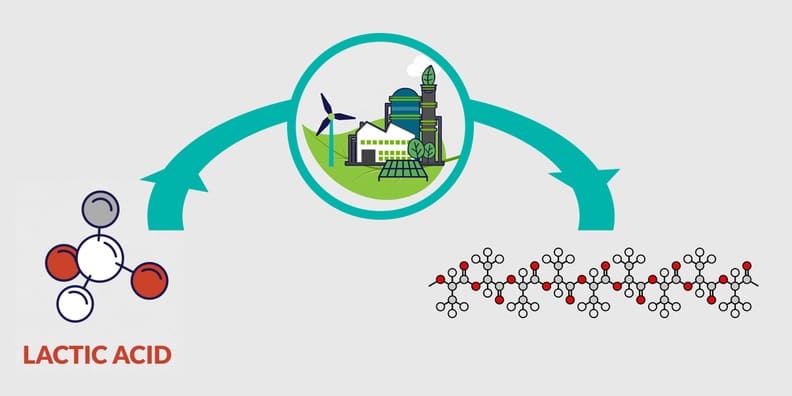
-Market review of recycled market in 2022
Recycled plants started the Spring Festival holiday late. A good start after the holiday was anticipated due to tight feedstock, lower inventory, limited replenishment of downstream spinners and views on high oil prices first. Plastic-Recycling – PLA – CO2-emissions
| —– | ——————————————————————————— |
| Feb | The Beijing 2022 Olympic Winter Games officially opened on Feb 4, 2022, and Bing Dwen Dwen, the cute panda mascot, continued to be a smash hit; HC virgin PSF and low-melting PSF was oversupplied and prices slipped; Oil prices surged with the outbreak of Russia-Ukraine conflict on Feb 24. |
| Mar | Oil prices soared, and recycled chemical fiber prices followed up, but the rise was smaller than virgin chemical fiber, so price spread between virgin and recycled chemical fiber enlarged. But downstream spinners could not accept the high level. From mid-Mar, re-PSF prices fell down and sales were thin. With the multiple outbreaks of epidemic in late Mar, some plants cut production or suspended operation. |
| Apr | The epidemic continued to impact the market. HC re-PSF demand was soft and prices were hard to rise. Plants curtailed production and suspended operation intensively in Apr and May. |
| May | After the May Day holiday, epidemic emerged in Jiangyin, and transportation was difficult. Virgin PSF offers ticked up mostly. Price spread between virgin PSF and close virgin PSF enlarged to 2,000yuan/mt. It was heard that demand of virgin PSF returned to re-PSF, which was favorable for quality HTLS close virgin PSF, while conventional medium-grade re-PSF and close virgin PSF sales were ordinary. HC re-PSF market was mild. |
| Jun | Re-PSF market moved up first and then fell down following the trend of PX market. The downward space was limited with the support of feedstock. HC re-PSF market suffered large-scale losses in Jun. |
| Jul | With the expectation of economic recession, oil prices slipped sharply in Jul. Re-PSF prices followed lower, and sales turned thinner, leading to accumulating inventory. |
| Aug | Recycled plants cut production and suspended operation intensively again impacted by power rationing, high temperature and weak market situation. |
| Sep | In early Sep, the sharp rise of PX pushed up recycled PSF offers, while HC re-PSF prices were hard to rise in Guangdong; Recycled market faced two difficulties: feedstock supply was tight in winter; downstream demand was sluggish and market confidence lacked. |
| Oct | The market was steady from Oct 1-3, but during the late period of National Day holiday, oil prices ticked up stimulated by production cut agreement and polyester product prices all increased. Later, demand turned weaker and prices moved lower. Buoyant season was not favorable. |
| Nov | PET flakes supply reduced with lower temperature and recycled chemical fiber plants faced tight feedstock, lower virgin PSF prices and possible depreciation of inventory; Plant operation was affected in Hebei by the epidemic. |
| Dec | Plants originally planned to start Spring Festival holiday earlier this year due to weak demand and tight feedstock supply. But with the relaxation of COVID control measures, plants planned to delay the holiday tim |
In 2022, recycled chemical fiber prices fluctuated limitedly. Close virgin PSF and HC re-PSF in Zhejiang moved up and then declined for three times in the range of 6,000-7,000yuan/mt and 6,800-7,500yuan/mt respectively.
Under the background of global economic recession expectation and weak Chinese demand, oversupplied situation was obvious, and recycled chemical fiber price moved up mainly driven by costs or macro environment, so the rise was limited and time could not last long. Plastic-Recycling – PLA – CO2-emissions
In addition, impacted by high temperature, power rationing, weak demand, tight feedstock supply and epidemic, plants have shut down and curtailed production intensively. Many new units plan to be put into operation in 2023. In 2023, with the continual capacity expansion, oversupply may be more obvious.
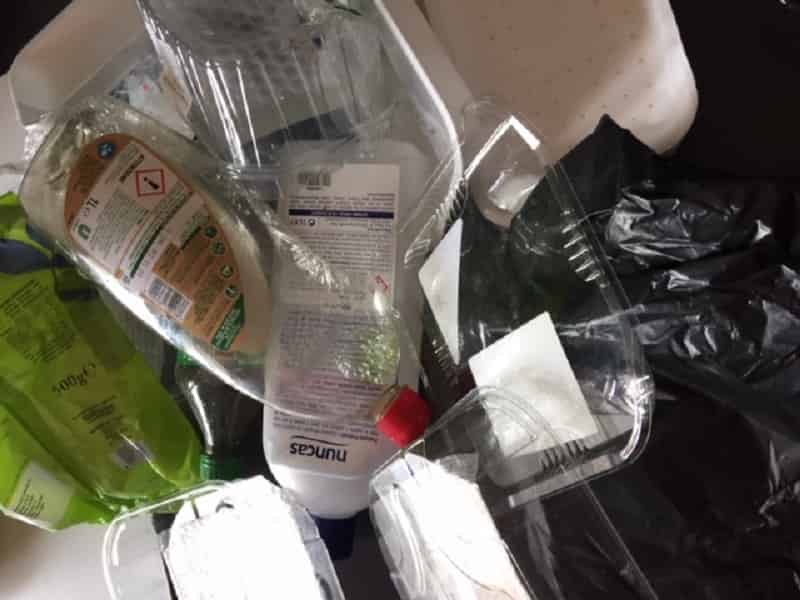
Plastic-Recycling – PLA – CO2-emissions
